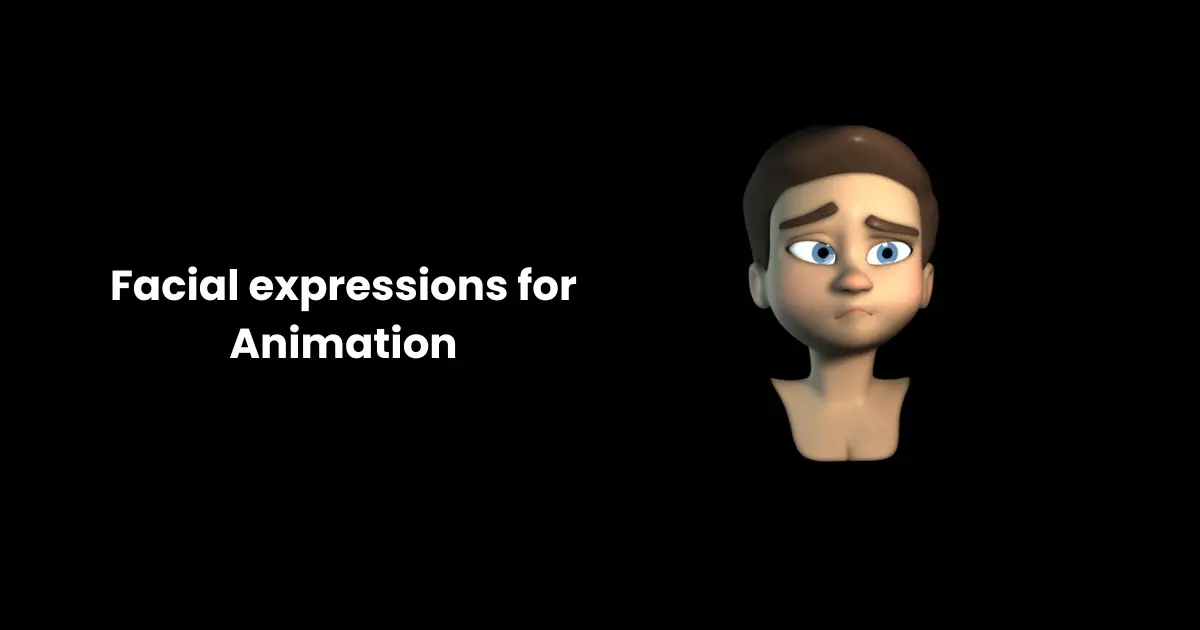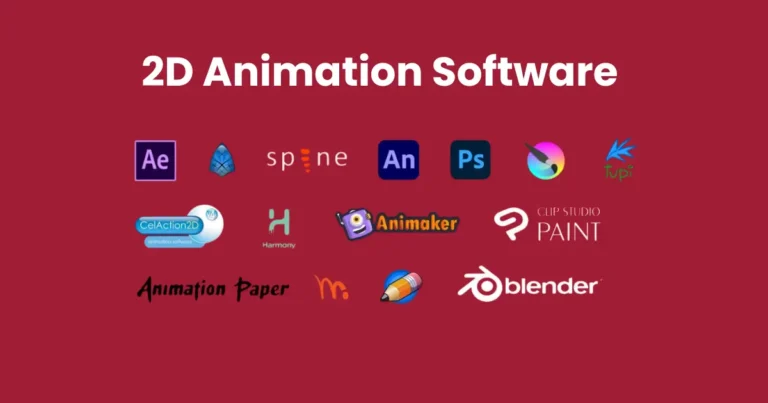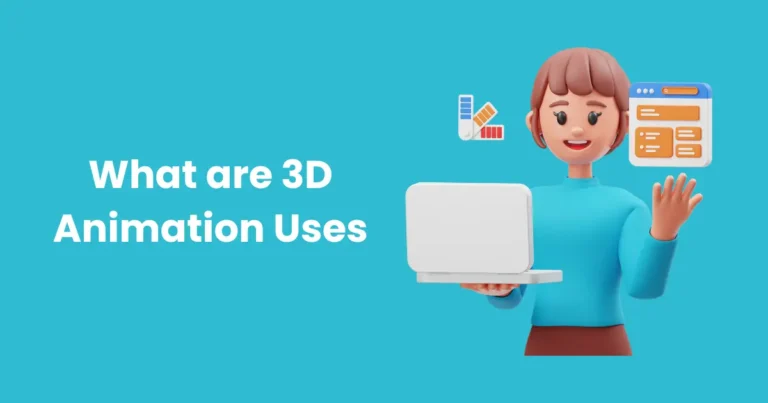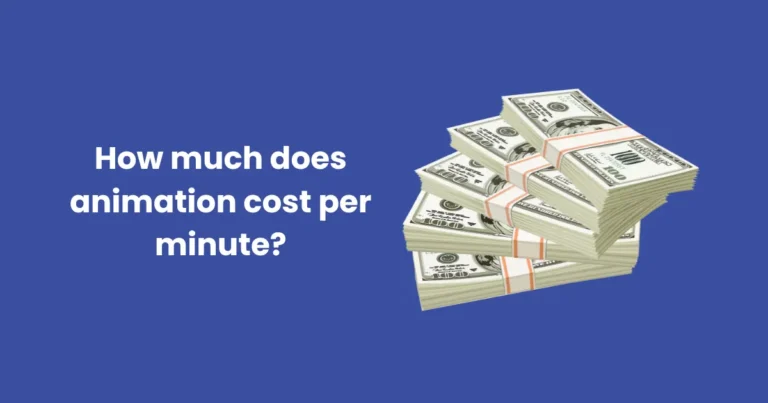Facial expressions for animation | All you need to know about facial animation in 2025

Contents
- 1 The Fundamentals of Facial Expressions for animation
- 2 Techniques Facial Expressions for animation
- 2.0.1 1. Observing Real-Life References
- 2.0.2 2. Keyframe Animation
- 2.0.3 3. Blend Shapes (Morph Targets)
- 2.0.4 4. Rigging and Controls
- 2.0.5 5. Motion Capture (Mocap)
- 2.0.6 6. Exaggeration for Animation
- 2.0.7 7. Timing and Pacing
- 2.0.8 8. Layering Expressions
- 2.0.9 9. Synchronizing with Dialogue
- 2.0.10 10. Experimentation and Feedback
- 3 Facial Expressions for Different Animation Styles
- 4 Tools and Software for Creating Facial Expressions
- 5 Tips for Mastering Facial Expressions in Animation
Facial expressions for animation, transforming static characters into dynamic, relatable personalities. They communicate emotions, intentions, and reactions, making the storytelling experience immersive and engaging. Without compelling facial expressions, even the most intricately designed characters can feel lifeless or disconnected from the audience.
In animation, facial expressions do more than reflect a character’s mood—they build emotional connections. A furrowed brow or a mischievous grin can reveal layers of personality, adding depth to the narrative. Whether it’s a heartfelt moment in a Pixar movie or a comedic scene in a slapstick cartoon, the right facial expression brings authenticity to the story.
The Fundamentals of Facial Expressions for animation
Facial expressions are a universal language, but their creation in animation requires a deeper understanding of the underlying mechanics and emotional nuances. To craft realistic and impactful facial expressions for animation, animators need to study the anatomy of the face, recognize emotional patterns, and master techniques that bring characters to life.
Understanding Facial Anatomy
The human face is a complex structure made up of muscles, bones, and skin. Animators must focus on key muscle groups that influence expressions, including:

- Frontalis (Forehead):
Responsible for raising eyebrows and creating horizontal lines, this muscle is crucial for expressions of surprise or curiosity. - Orbicularis Oculi (Eyes):
Controls eyelid movement and contributes to expressions like smiling (crow’s feet) or sadness (drooping lids). - Zygomaticus Major and Minor (Cheeks):
These muscles pull the corners of the mouth upward, essential for smiles and laughter. - Orbicularis Oris (Mouth):
Encircling the lips, this muscle shapes expressions like pursing lips for doubt or stretching them for joy.
By understanding how these muscles work together, animators can replicate subtle yet powerful facial expressions.
Emotions and Their Visual Cues
Facial expressions for animation are deeply tied to human emotions. Here are some key emotional states and their corresponding facial markers:
Happiness:
- Raised cheeks
- Upturned corners of the mouth
- Slight crinkling around the eyes
- Sadness:
- Downturned mouth corners
- Drooping eyelids
- Furrowed brow
Anger:
- Lowered, drawn-together eyebrows
- Flared nostrils
- Tightly pressed lips
Surprise:
- Raised eyebrows
- Wide-open eyes
- Slightly parted lips
Fear:
- Tensed lips
- Widened eyes
- Raised eyebrows
Recognizing and amplifying these visual cues can make animated characters’ emotions more relatable and expressive.
Key Elements of Facial Expressions
- Symmetry and Asymmetry:
Realistic expressions often include a touch of asymmetry—one eyebrow raised slightly higher or a crooked smile—to add authenticity. - Timing:
The speed of an expression’s change conveys emotional intensity. For example, slow changes feel subtle, while quick shifts imply shock or urgency. - Microexpressions:
Brief, involuntary expressions reflect genuine emotions. Incorporating these into animation adds a layer of realism.
Facial Expressions and Context
Expressions should match the context of the scene. For example:
- Exaggeration: Suited for cartoons and comedic animation.
- Subtlety: Ideal for dramatic, realistic animation.
By blending anatomy, emotion, and technique, animators can master the fundamentals of facial expressions and create characters that communicate effectively and captivate audiences.
Understanding Emotions and Their Expressions
Emotions are the driving force behind compelling animated characters, and their accurate portrayal through facial expressions can transform a scene. By delving into the psychology of emotions and studying their physical manifestations, animators can craft expressions that feel authentic and relatable. This understanding allows animators to bridge the gap between the audience and the character’s inner world.
The Psychology of Emotions in Animation
Emotions are universal, yet they are often expressed in unique ways depending on the character’s personality, situation, and environment. To create believable facial expressions for animation, it’s crucial to identify the core emotional states and how they influence the face.
Six Primary Emotions and Their Expressions
Psychologists Paul Ekman and Wallace Friesen identified six primary emotions—happiness, sadness, anger, surprise, fear, and disgust—that are universally recognized. Here’s how these emotions manifest through facial expressions:
- Happiness:
- Visual Cues:
- Raised cheeks
- Upturned corners of the mouth (smile)
- Crow’s feet around the eyes
- Examples in Animation:
- Joy’s beaming expressions in Inside Out.
- Visual Cues:
- Sadness:
- Visual Cues:
- Drooping eyelids
- Downturned mouth corners
- Slightly furrowed brows
- Examples in Animation:
- Eeyore’s melancholic expressions in Winnie the Pooh.
- Visual Cues:
- Anger:
- Visual Cues:
- Lowered eyebrows drawn together
- Flared nostrils
- Tightened or pursed lips
- Examples in Animation:
- Shrek’s intimidating glares in the Shrek series.
- Visual Cues:
- Surprise:
- Visual Cues:
- Raised eyebrows
- Widened eyes
- Open, slightly rounded mouth
- Examples in Animation:
- Characters reacting to sudden events in Looney Tunes.
- Visual Cues:
- Fear:
- Visual Cues:
- Widened eyes with visible sclera
- Raised eyebrows drawn together
- Slightly open mouth
- Examples in Animation:
- Simba’s fearful expressions during intense scenes in The Lion King.
- Visual Cues:
- Disgust:
- Visual Cues:
- Wrinkled nose
- Raised upper lip
- Narrowed eyes
- Examples in Animation:
- Disgust’s exaggerated expressions in Inside Out.
- Visual Cues:
Understanding emotions and their expressions is foundational for creating relatable characters. By mastering these elements, animators can craft performances that resonate deeply with audiences, drawing them into the story.
Techniques Facial Expressions for animation
Creating realistic and engaging facial expressions is an art that requires both technical expertise and creative finesse. The right techniques help animators breathe life into their characters, making them relatable and emotionally resonant. From traditional hand-drawn methods to advanced 3D animation tools, a variety of approaches can be employed to perfect facial expressions for animation.

1. Observing Real-Life References
The first step in animating compelling facial expressions is studying real-life emotions. Observing how people react in various situations helps animators capture authentic details. This can be done by:
- Using Mirrors: Animators can mimic expressions in a mirror to understand how facial muscles move.
- Recording Video References: Filming actors performing specific emotions provides a detailed reference for subtle nuances.
- Analyzing Media: Observing expressions in movies or photographs can inspire creative interpretations.
2. Keyframe Animation
Keyframe animation is one of the most fundamental techniques for animating facial expressions.
- How It Works:
- Animators create key poses at significant moments of an expression, such as the start, peak, and end of a smile.
- These keyframes are then interpolated to create smooth transitions.
- Advantages:
- Full control over the timing and intensity of expressions.
- Ideal for stylized or exaggerated animation.
3. Blend Shapes (Morph Targets)
Blend shapes are commonly used in 3D animation to create seamless facial expressions.
- How It Works:
- Pre-defined shapes of a character’s face (e.g., a smile, frown, or raised eyebrows) are blended together to form expressions.
- Animators adjust sliders to control the intensity of each shape.
- Advantages:
- Simplifies the animation process.
- Allows for combining multiple expressions, like surprise mixed with joy.
4. Rigging and Controls
Rigging provides the underlying framework for animating facial expressions in 3D characters.
- Facial Rigging:
- Involves creating a skeleton or control system for a character’s face.
- Includes controllers for moving eyebrows, eyelids, lips, and jaw.
- Advantages:
- Offers greater flexibility and precision.
- Essential for animating complex or realistic expressions.
5. Motion Capture (Mocap)
Motion capture technology can record an actor’s facial movements and translate them directly onto a digital character.
- How It Works:
- Sensors or cameras track an actor’s facial movements in real time.
- The data is mapped onto the character’s rig.
- Advantages:
- Captures subtle details and realistic expressions.
- Speeds up the animation process for high-quality productions.
- Limitations:
- Requires cleanup and adjustments to fit the character’s design.
6. Exaggeration for Animation
While realism is often desirable, exaggeration is essential for many animation styles, particularly in cartoons or games.
- How to Use Exaggeration:
- Amplify expressions to make emotions more visible and impactful.
- Focus on exaggerating key features, like widening eyes for shock or stretching a smile for joy.
7. Timing and Pacing
The timing of an expression plays a significant role in its believability.
- Slow Transitions: Work well for subtle emotions, such as contemplation or sadness.
- Quick Changes: Indicate surprise, shock, or sudden excitement.
Experimenting with timing allows animators to emphasize specific emotions and create naturalistic performances.
8. Layering Expressions
Realistic facial animation often involves layering multiple elements. For example:
- Start with Eyes: Animate the eyes first to establish the character’s focus and emotion.
- Add Brows and Forehead: These refine the intensity and nuance of the emotion.
- Finish with Mouth Movements: Smiles, frowns, or lip-sync add final touches to the expression.
9. Synchronizing with Dialogue
For characters speaking, facial expressions must align with lip-sync. Techniques include:
- Matching mouth shapes (phonemes) to dialogue.
- Adding appropriate expressions, such as a smile during happy speech or a scowl for anger.
10. Experimentation and Feedback
Animation thrives on iteration. Test various expressions to find what works best for a scene. Collaborating with peers or using audience feedback ensures that expressions evoke the desired emotion.
By mastering these techniques, animators can create facial expressions that enhance their characters’ believability and emotional depth. Whether working on stylized cartoons or realistic 3D models, understanding the nuances of facial animation is key to captivating storytelling.
Facial Expressions for Different Animation Styles
Facial expressions are a cornerstone of character animation, but their execution varies significantly depending on the style of animation. Whether you’re animating for a cartoon, a realistic 3D project, or an anime, adapting facial expressions to suit the aesthetic and emotional tone of the style is crucial. Understanding these differences ensures that expressions align with the medium and resonate with the intended audience.

1. Cartoony Animation
Cartoon animation is known for its exaggerated and highly stylized expressions. These bold facial movements help convey emotions instantly and are often used in comedic or fantastical settings.
- Key Features:
- Over-the-Top Exaggeration: Expressions are amplified for comedic or dramatic effect. For example, eyes popping out for surprise or a jaw dropping to the floor for shock.
- Simplified Anatomy: Facial features are often simplified, with large eyes and expressive mouths.
- Fast Transitions: Rapid changes in expressions create dynamic and energetic performances.
- Best Practices:
- Use squash and stretch techniques to emphasize the elasticity of facial features.
- Focus on iconic shapes like crescent moon smiles or exaggerated tear drops for sadness.
- Examples:
- Characters from Looney Tunes or Tom and Jerry showcase hyper-expressive, larger-than-life reactions.
2. Realistic 3D Animation
In realistic 3D animation, subtlety is the key to creating believable facial expressions. These are commonly used in films, games, or VR experiences where immersion is a priority.
- Key Features:
- Subtle Movements: Emotions are conveyed through small changes, such as a slight raise of the eyebrow or a faint smile.
- Facial Anatomy Accuracy: Expressions are grounded in real-life muscle movements.
- Complex Emotions: Characters display nuanced, layered emotions, such as bittersweet smiles or restrained anger.
- Best Practices:
- Use motion capture or video references to replicate lifelike movements.
- Ensure that every expression matches the character’s context and personality.
- Examples:
- Pixar’s Soul or Naughty Dog’s The Last of Us games, where every twitch and microexpression enhances the realism.
3. Anime and Manga-Inspired Animation
Anime has a distinct style of facial expressions that often blend exaggerated features with a more minimalist approach to emotion.
- Key Features:
- Iconic Expression Marks: Symbols like sweat drops, blush lines, or popping veins are used to emphasize feelings like nervousness or anger.
- Big, Expressive Eyes: Eyes are the focal point, often changing size or shape to communicate emotions vividly.
- Simplified Yet Powerful: While expressions are stylized, they are highly effective at conveying emotions with a single frame.
- Best Practices:
- Use dramatic changes in expressions to enhance emotional beats, such as a sudden drop to chibi style for comedic moments.
- Focus on eye animations and subtle lip movements to match the dialogue’s tone.
- Examples:
- Characters in Naruto or Studio Ghibli films, which balance stylization with emotional depth.
4. Stop-Motion Animation
Stop-motion animation uses physical models or puppets, which presents unique challenges for animating facial expressions.
- Key Features:
- Physical Constraints: Expressions rely on replaceable face plates, sculpted features, or hand-adjusted movements.
- Focus on Simplicity: Overly complex expressions can be difficult to execute and may look unnatural.
- Expressive Body Language: Often complements facial expressions to convey emotions.
- Best Practices:
- Plan expressions carefully during pre-production to ensure smooth transitions between frames.
- Use lighting and camera angles to enhance the emotional impact of subtle expressions.
- Examples:
- Characters in Coraline or The Nightmare Before Christmas use carefully crafted expressions to evoke emotion.
5. Minimalist or Abstract Styles
Minimalist animation often relies on fewer details, requiring creative approaches to facial expressions to communicate emotions effectively.
- Key Features:
- Simple Lines and Shapes: Expressions are often reduced to a few strokes, such as a curved line for a smile or a dot for an eye.
- Symbolic Representation: Emotions may be represented through abstract elements like changing colors or shapes.
- Reliance on Context: Expressions are often supported by the scene’s context or accompanying music.
- Best Practices:
- Focus on clear, bold expressions that are easy to read at a glance.
- Use abstract elements like color shifts or shape transformations to emphasize emotions.
- Examples:
- Characters in The Adventures of Prince Achmed or minimalist web animations often embody this approach.
6. Video Game Animation
In video games, facial expressions must be both dynamic and responsive, as they often interact with player input or real-time events.
- Key Features:
- Responsive Animation: Expressions adjust based on in-game events or player choices.
- Blend of Realistic and Exaggerated: Depends on the game’s aesthetic and narrative tone.
- Loopable Movements: For idle animations or repeating emotional states.
- Best Practices:
- Use blend shapes and facial rigs to create smooth transitions between expressions.
- Incorporate emotional states that change dynamically to reflect gameplay.
- Examples:
- Characters in The Witcher 3 or Uncharted series display a range of detailed, responsive facial animations.
Facial expressions for animation are as diverse as the styles they inhabit. Whether crafting exaggerated cartoon faces or subtle 3D performances, understanding the nuances of each style ensures expressions that are not only visually appealing but also emotionally impactful. Tailoring techniques to fit the animation style creates characters that truly connect with their audience.
Tools and Software for Creating Facial Expressions
Creating realistic and expressive facial animations requires the right tools and software to bring characters to life. Modern animation software offers a variety of features, from keyframe animation to advanced AI-driven motion capture. Below is a comprehensive guide to the tools and software used to craft facial expressions for animation.

1. Blender
Blender is a powerful, open-source 3D animation suite that is widely used for creating facial animations.
- Features:
- Facial rigging tools for precise control.
- Shape keys (blend shapes) to create custom expressions.
- Animation layers for fine-tuning facial movements.
- Grease Pencil for 2D facial animation.
- Best For:
- Beginners and professionals looking for a cost-effective solution.
- Creating both stylized and realistic expressions.
2. Autodesk Maya
Autodesk Maya is a leading software in the 3D animation industry, offering advanced tools for creating facial expressions.
- Features:
- Comprehensive facial rigging and skinning tools.
- Blend shape support for complex expressions.
- Time Editor for refining expression timing.
- Plugins like Faceware for motion capture integration.
- Best For:
- High-end film and game production requiring detailed facial animation.
3. Adobe After Effects
While not primarily a 3D tool, Adobe After Effects is excellent for 2D animation and motion graphics.
- Features:
- Puppet Warp tool for manipulating facial elements.
- Layer-based animation for customizing facial features.
- Integration with Adobe Character Animator for live facial motion capture.
- Best For:
- 2D animators and motion graphic artists working on stylized facial expressions.
4. ZBrush
ZBrush is primarily a sculpting tool but plays a crucial role in designing and refining facial expressions for 3D characters.
- Features:
- Morph targets for creating multiple facial poses.
- Detailed sculpting tools for realistic expressions.
- Integration with other animation software like Maya and Blender.
- Best For:
- Creating high-resolution 3D facial expressions for detailed characters.
5. Faceware Studio
Faceware Studio specializes in real-time facial motion capture for creating realistic facial animations.
- Features:
- Captures subtle facial movements using webcams or high-end cameras.
- Live animation preview while recording expressions.
- Integration with software like Maya and Unreal Engine.
- Best For:
- Animators requiring accurate facial motion capture for games and films.
Choosing the right tool for creating facial expressions depends on your animation style, budget, and expertise. While Blender and Maya are versatile and widely used, software like Adobe Character Animator or Faceware Studio offers specialized features for unique workflows. By mastering these tools, animators can craft engaging and emotionally rich facial expressions that bring characters to life.
Tips for Mastering Facial Expressions in Animation
Facial expressions are critical in conveying emotions and storytelling in animation. A well-crafted expression can make a character relatable, enhancing the viewer’s connection to the narrative. Mastering the art of facial expressions requires a combination of observational skills, technical expertise, and creative interpretation. Here are some essential tips to elevate your facial animation skills.

1. Study Human Expressions
Understanding the subtleties of human expressions is the foundation of great facial animation.
- Observe Real Life: Watch how people react to various emotions in everyday situations.
- Use a Mirror: Mimic emotions yourself and observe how your facial muscles move.
- Study Acting: Analyze performances in movies and theater to see how actors use expressions to convey emotion.
2. Know the Basics of Facial Anatomy
Familiarity with facial anatomy helps animators create realistic and believable expressions.
- Key Facial Muscles: Learn how muscles like the orbicularis oculi (around the eyes) and zygomaticus (smile muscles) work.
- Understand Proportions: Maintain consistency in how features like eyes, nose, and mouth move in relation to one another.
- Expression Zones: Focus on three areas: the eyes, brows, and mouth, as they are the primary indicators of emotion.
3. Emphasize the Eyes
The eyes are the most expressive part of the face and can convey complex emotions.
- Pupil Movements: Subtle shifts in gaze can indicate focus, thought, or emotion.
- Blink Timing: Use natural blinks to make expressions more lifelike. Deliberate blinks can emphasize emotions, like a slow blink for sadness or a rapid blink for nervousness.
- Eyebrow Dynamics: Slight adjustments in the brows can drastically change an expression’s meaning.
4. Use Reference Footage
Recording reference footage is invaluable for animators.
- Act It Out: Perform the desired expressions yourself or ask others to act for you.
- Analyze Details: Look for microexpressions, timing, and transitions between emotions.
- Experiment: Use tools like phones or webcams to capture various angles and lighting for diverse perspectives.
5. Exaggerate Where Necessary
Exaggeration is a staple of animation, especially in stylized or cartoonish works.
- Push the Limits: Make expressions bigger or more dramatic than in real life to ensure they read clearly on screen.
- Balance Realism and Style: Find the sweet spot where exaggeration enhances the emotion without becoming distracting.
- Use Squash and Stretch: For exaggerated styles, apply these principles to enhance facial flexibility.
Mastering facial expressions in animation is a blend of science and art. By studying human behavior, leveraging technology, and practicing consistently, animators can create expressions that resonate with audiences. Whether you’re working on exaggerated cartoon faces or nuanced 3D characters, these tips will help you infuse life and emotion into your creations.
Conclusion
Facial expressions for animation are the cornerstone of character-driven animation, playing a vital role in storytelling and emotional connection. Mastering this art requires a deep understanding of human emotions, keen observational skills, and the ability to translate those insights into dynamic visual forms. By focusing on key elements such as the eyes, timing, and subtle nuances, animators can craft expressions that resonate with viewers and enhance the narrative impact of their work. Whether creating realistic 3D characters or stylized cartoon personas, the power of facial animation lies in its ability to evoke empathy and make characters feel alive.
By combining traditional techniques with modern tools and software, animators can push the boundaries of what’s possible in facial expression animation. The use of motion capture, blend shapes, and AI-driven tools makes the process more accessible, enabling the creation of highly detailed or stylized expressions. With consistent practice and attention to detail, animators can develop a unique style that not only captures the essence of their characters but also elevates their storytelling. Ultimately, mastering facial expressions unlocks the potential to connect deeply with audiences and bring animated worlds to life.






